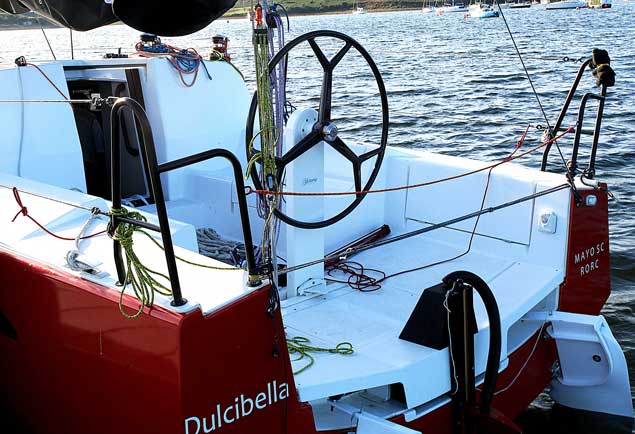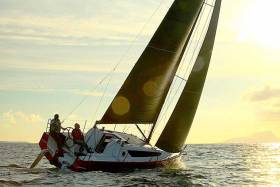Displaying items by tag: electric motor
Is This Sailing’s Future? You Tell Us
Every cruiser-racing enthusiast dreams of a perfect boat which doesn’t have the inevitable whiff of diesel about her, has minimal maintenance, enjoys the benefit of a genuinely lifting keel, and yet with keel down, she sails like a real zippy performance cruiser writes W M Nixon.
Well, Rory Staunton – who has links with Mayo in general and Clew Bay in particular – became convinced that this was the only way to go. And after further study, he discovered that many of the leading international builders had closed down their research and development departments during the recession, and didn’t plan on working on anything really revolutionary until business was well up again, and staying up.
He felt there was a gap in the market, and went to designer Guy Whitehouse and renowned marine innovator Jo Richards (both specialists of considerable repute) to get the design for a boat around 34ft long which would be trailerable yet have a real keel when it’s lowered, and would be powered by an electric motor relying for range on the latest in battery technology.
In addition, she would naturally have twin rudders but with the luxury of wheel steering with a moveable wheel which can be hauled to whichever side of the cockpit suits. She would have a virtually wood-free and easily-cleaned yet luxurious interior, complete with electric cooker. And in general, she would be an impressive amount of good new-concept things all in one package.
 The adjustable steering wheel position is just one of many unusual features, all in the one boat. Photo: Teresa Cowley
The adjustable steering wheel position is just one of many unusual features, all in the one boat. Photo: Teresa Cowley
It may sound too good to be true. But the prototype was sailing in Clew Bay last month. She’s been back to the workshops for further adjustments, and this weekend she’s on display and available for appraisals, tyre kicking, test sails and whatever at the National Yacht Club in Dun Laoghaire.
So if you’re interested, do please go along - and let us know what you think in the comments section below. There’s so much fancy technology in this w1Da as she’s called (we gather it’s something to do with the Wild Atlantic Way) that all and any expert opinion (and non-expert too) will be very welcome.
As for someone who unveils a new sailing cruiser in the very last weekend of November with snow forecast, we couldn’t possibly comment on that…

























































